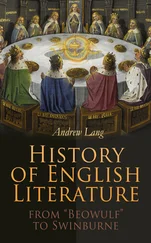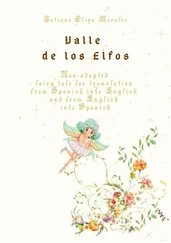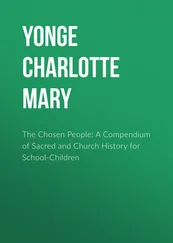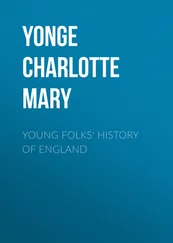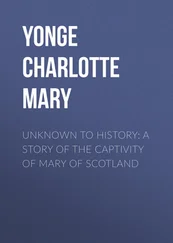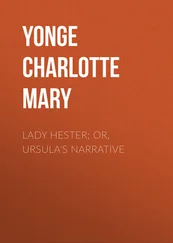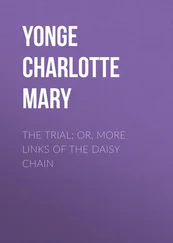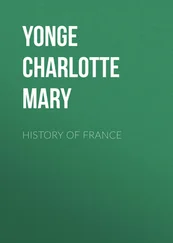Charlotte Yonge - Cameos from English History, from Rollo to Edward II
Здесь есть возможность читать онлайн «Charlotte Yonge - Cameos from English History, from Rollo to Edward II» — ознакомительный отрывок электронной книги совершенно бесплатно, а после прочтения отрывка купить полную версию. В некоторых случаях можно слушать аудио, скачать через торрент в формате fb2 и присутствует краткое содержание. Жанр: foreign_humor, Юмористические книги, literature_19, foreign_antique, на английском языке. Описание произведения, (предисловие) а так же отзывы посетителей доступны на портале библиотеки ЛибКат.
- Название:Cameos from English History, from Rollo to Edward II
- Автор:
- Жанр:
- Год:неизвестен
- ISBN:нет данных
- Рейтинг книги:4 / 5. Голосов: 1
-
Избранное:Добавить в избранное
- Отзывы:
-
Ваша оценка:
- 80
- 1
- 2
- 3
- 4
- 5
Cameos from English History, from Rollo to Edward II: краткое содержание, описание и аннотация
Предлагаем к чтению аннотацию, описание, краткое содержание или предисловие (зависит от того, что написал сам автор книги «Cameos from English History, from Rollo to Edward II»). Если вы не нашли необходимую информацию о книге — напишите в комментариях, мы постараемся отыскать её.
Cameos from English History, from Rollo to Edward II — читать онлайн ознакомительный отрывок
Ниже представлен текст книги, разбитый по страницам. Система сохранения места последней прочитанной страницы, позволяет с удобством читать онлайн бесплатно книгу «Cameos from English History, from Rollo to Edward II», без необходимости каждый раз заново искать на чём Вы остановились. Поставьте закладку, и сможете в любой момент перейти на страницу, на которой закончили чтение.
Интервал:
Закладка:
At sunset, that well-known voice was no longer heard, and the setting sun beheld Tunstan the White perform the crowning achievement of the day, uproot the standard banner of Normandy that the morning beams had seen committed to his charge. Not an earl or thane of Wessex was living; and heaps of slain lay thick on Heathfield hill, and the valley round a very lake of blood. Senlac, or Sanglac, was its old name, and sounded but too appropriate to the French ears of the Conqueror, as, in a moment of sorrow for the fearful loss of life he beheld, he vowed that here should stand an Abbey where prayer should be made for pardon for his sins and for the repose of the souls of the slaughtered. Darkness came on; but the Saxons, retreating under its cover, were still so undaunted that the Normans could hardly venture to move about the field except in considerable parties, and Eustace of Boulogne, while speaking to the Duke, was felled to the earth by a sudden blow.
In the morning, Gytha, the widow of Godwin, who had lost four children by the perjury and ambition of one of them, came to entreat permission to bury. Gyrtha and Leofwyn lay near together at the foot of the banner. Harold was sought in vain, till Edith of the Swan neck, a lady he had loved, was brought to help in the melancholy quest.
She declared a defaced and mangled corpse to be that of Harold, and it was carried, with those of the two brothers, to the Abbey of Waltham, where it was placed beneath a stone bearing the two sorrowful words, “Infelix Harold.”
Years passed on, and the people had long become accustomed to the Norman yoke, when there was much talk among them of a hermit, who dwelt in a cell not far from the town, in the utmost penitence and humility. He was seldom seen, his face was deeply scarred, and he had lost his left eye, and nothing was known of his name or history; but he was deeply revered for his sanctity, and when Henry Beauclerc once visited Chester, he sought a private interview with the mysterious penitent.
It is said, that when the hermit lay on his death-bed, he owned himself to be Harold, son of Godwin, once King of England for seven months. He had been borne from the bloody hill, between life and death, in the darkness of the evening, by the two faithful monks, Osgood and Ailric, and tended in secret till he recovered from his wounds.
Since that time he had been living in penitence and contrition, unknown to and apart from the world, and died at length, trusting that his forty years’ repentance might be accepted.
If this tale be true, what a warning might not he have bestowed on the young prince Henry, destined to run a like course of perjury and ambition, and to feel it turn back upon him in the dreariness of desolate old age, when “he never smiled again.” Had not the penitent Harold more peace at the last than the king Henry?
The same story is told of almost every king missed in a lost battle.
Arthur, borne away to die at Avalon, and believed to be among the fairies; Rodrigo, the last of the Goths, whose steed Orelio and horned helmet lay on the banks of the river, and whose name was found centuries after on a rude gravestone, near a hermitage; James IV., whom the Scots by turns hoped to see return from pilgrimage, and pitied as they looked at Lord Home’s border tower; the gallant Don Sebastian, the last of the glorious race of Portuguese Kings, never seen after his shout of “Let us die!” in the tumult of Alcaçer, yet long looked for by his loving people—of each in turn the belief has arisen among the subjects who clung to the hope of seeing the beloved prince, and dwelt on the doubt whether his corpse was identified. In the cases of Harold and Rodrigo—generous men tempted into fearful and ruinous crimes—one would hope the tale was true, and that the time for repentance was vouchsafed to them; nor are their stories entirely without authority.
Harold had three young children, who wandered about under the care of their grandmother, Gytha, at one time finding a shelter in the Holms, those two islets in the British Channel, at another taking refuge in Ireland, whence they at length escaped to Norway, and the daughter married one of the Kings of Novgorod, the beginning of the Empire of Russia. Ulfnoth, the only remaining son of the bold Godwinsons, was the hostage that Edward the Confessor had placed in the hands of the Duke of Normandy; he was seized upon once more by William Rufus, and remained in captivity till his death. The Conqueror kept his vow, and erected the splendid Battle Abbey on the field that gave him a kingdom. The high altar stood where Harold’s banner had been planted, and the enclosures surrounded every spot where the conflict had raged.
They were measured out by the corpses of Normans and Saxons. The Battle-roll, a list of every Norman who had borne arms there, was lodged in the keeping of the Abbot, and contains the names of many a good old English family which has held the same land generation after generation, English now, though then called the Norman spoiler, but it is to be feared, that the roll was much tampered with to gratify family vanity. Battle Abbey was one of the greatest and richest foundations. The Abbot was a friar, and, according to the unfortunate habit of exempting monasteries from the Bishop’s jurisdiction, was subject to no government but the Pope’s; and this led to frequent disputes between the Abbot and the see of Winchester.
It was overthrown in the Reformation, and is now a mere ruin; but its beautiful arches still remain to show that, better than any other conqueror, William knew how to honor a battle-field. There is but one other Battle Abbey in the world—Batalha in Portugal—which covers the plain of Aljubarota, where Joao I. won his kingdom from Castile; and as his wife was a daughter of John of Gaunt, a most noble and high-minded princess, it is most probable that she suggested the work after the example of her great ancestor; nay, when the visitor enters the nave, and is reminded by the architecture of Winchester, it seems as if Philippa of Lancaster might have both proposed the foundation, and sent to England for the plan, to the Architect and Bishop, William of Wykeham.
Nor is Battle Abbey the only remaining monument of Hastings. Matilda’s own handiwork prepared her thank offering of tapestry, recording her husband’s victory; and this work, done as it was for a gift to Heaven, not a vainglorious record, still endures in the very cathedral to which she gave it, one of the choicest historical witnesses that have come down to our times. We might be apt to regret that she did not present her work to Battle Abbey, where it would have been most appropriate; but as the Puritans would most likely have called it a Popish vestment savoring of idolatry, we are consoled by thinking it probably owes its preservation to her having chosen to give it as a hanging on festival days to the Cathedral at Bayeux, the see of her husband’s half-brother, Odo, who shared in all the toils and dangers of the expedition, and whom she has taken especial care to represent for the benefit of the townspeople of Bayeux; for wherever we find his broad face, large person, shaven crown, and the chequered red and green suit by which she expressed his wadded garment, his name is always found in large letters; and he is evidently in his full glory when we find him, club in hand, at the beginning of the battle, and these words worked round him: Odo Eps. (episcopus) baculum tenens, confortat pueros . He was one of the bad, warlike Bishops of those irregular times, and brought many disasters on himself by his turbulence and haughtiness.
Matilda’s tapestry is a long narrow strip, little more than half a yard in breadth. It begins with Harold’s journey to Normandy, and ends unfinished in the midst of the battle; and most curious it is. The drawing is of course rude, and the coloring very droll, the horses being red and green, or blue, and, invariably, the off-leg of a different color from the other three, while the ways in which both horses and men fall at Hastings make the scene very diverting.
Читать дальшеИнтервал:
Закладка:
Похожие книги на «Cameos from English History, from Rollo to Edward II»
Представляем Вашему вниманию похожие книги на «Cameos from English History, from Rollo to Edward II» списком для выбора. Мы отобрали схожую по названию и смыслу литературу в надежде предоставить читателям больше вариантов отыскать новые, интересные, ещё непрочитанные произведения.
Обсуждение, отзывы о книге «Cameos from English History, from Rollo to Edward II» и просто собственные мнения читателей. Оставьте ваши комментарии, напишите, что Вы думаете о произведении, его смысле или главных героях. Укажите что конкретно понравилось, а что нет, и почему Вы так считаете.

